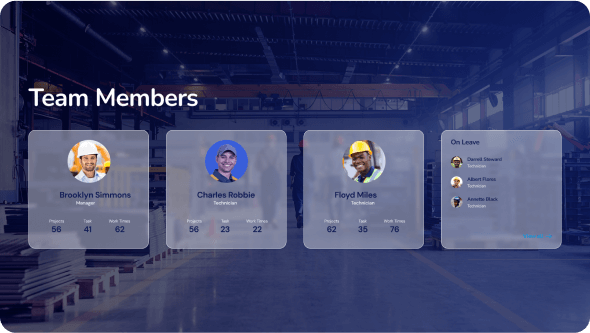
Published March 02, 2022, By Andrew Gissal

“Measurement is the first step that leads to control and eventually to improvement. If you can’t measure something, you can’t understand it. If you can’t understand it, you can’t control it. If you can’t control it, you can’t improve it.”
H. James Harrington
As we discussed in our latest blog post on how businesses can use data to improve performance reviews, it becomes incredibly more difficult to uncover an area for improvement when the core of it is unmeasurable. Whether we are consciously aware of it or not, employees rely on this sense of measurement and control to know what direction they are to go in; and some rely even more heavily on it to develop the motivation required to go in that direction in the first place.
At times, there are tasks or roles that are simply not fit for someone; whether they are outside their realm of experience, beyond their current bandwidth, or dealt to them without adequate resources. While individual reviews work to help identify whether certain behavioral and performance results are tied to these skill level abilities vs purely motivational levels, a measure of group performance works to help the team as a whole regardless of these factors. When team members can see where they stand on broad performance measurables amongst their peers, it’s not always a means for competition or comparison, but more of a tactic to fill the gaps with enhanced performance when all it may take is greater motivation from a select few.
Performance output levels will never be the same across the board, it’s inevitable that every organization has those that are considered top performers, and those that aren’t always delivering to their expected return. Before immediately trying to direct solution-focused actions to what seems like the core of the issue – those who are performing at lower levels – you first need context. A contextual understanding brings forward the collective knowledge of all the elements that comprise the bigger picture; in this case we find those elements to be each individual performance review coming together as one cohesive team review. This allows for a peripheral vision into just how much of a differentiation exists across the areas that are driving day-to-day operations, and to what extent they stray from industry standard.
Full data visibility makes this contextual analysis a quick top-of-mind action leaders can start every day with. It provides a cross-sectional look at that single point in time:
Whereas performance reviews provide a longitudinal comparison over time for that unique individual, an overarching performance dashboard for your team adds that critical layer for creating results that will strengthen your bottom line.

There are 3 main considerations to have when using this contextual data to better manage performance issues that are hindering your team, and as a result, your culture.
Consider the best way to address these as they fit to your current processes and where the crux of change is most achievable.
Taking second place doesn’t fuel a fire to win first nearly as much as it ever will for someone trying to completely avoid last place. At Bearex, we have been quick to take note of this as we work with clients through the initial stages of system inventory and data connectivity.
It’s not uncommon to assume that as humans, we are motivated to become the top performer in an area we are being measured or evaluated in, especially when there is full awareness of peer-to-peer comparison, not just measurements of our own self-progression. That being said, businesses often capitalize on this assumption by showcasing top performers in a ‘leaderboard’ fashion with the intent to increase motivation for those sitting below.
Consider this instead:
Doing so creates opportunities to:
A distant moving target is much more difficult to aim at than a nearby steady one. Who said goals had to be grandiose and industry-shaking?
The key is to focus on attainability – which stems from accessibility – which in turn stems from that level of complete awareness of where everyone stands, both low and top performers.
The more you can have complete access and control (control in the knowledge attainment sense) over the data operating in the background of your business, the better you can be at breaking down bite-sized goals. By this, we mean goals that take into consideration how they can accompany the different ways people on your team conduct their work, their current performance standings, and their unique strengths and areas for improvement.


Whether it takes reframing the data, leveraging actionable and achievable goals, or taking steps back to properly clean and restructure your data strategy, it’s about letting the measureables speak for themselves when all is said and done.
Although presenting statistics directly tied to specific employees is seemingly blatant and overt, mitigating the errors that come with incomplete reporting or verbal/handwritten statuses also influences:
Greater responsibility top to bottom
Stronger data integrity standards in the entire organization
More competitive leverage by increasing value on data-driven decisions company wide.

Andrew Gissal